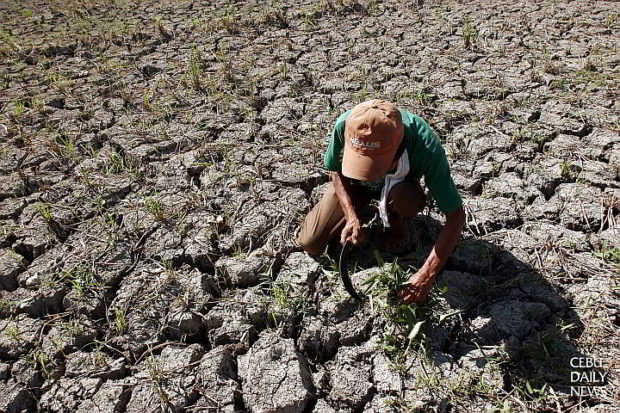
FILE PHOTO: During a dry spell in April 2007, a farmer struggles to tend to his rice paddy in Carcar town, south Cebu. INQUIRER FILES
MANILA, Philippines — State meteorologists on Tuesday officially declared the onset of El Niño.
Lorie Dela Cruz, weather specialist of the Philippine Atmospheric, Geophysical and Astronomical Services Administration (Pagasa), has confirmed this in an interview.
“Yes, that’s correct. For the past three months, the climatologists observed that there is an ongoing El Niño in the tropical Pacific, and its effects are starting to be felt in the country,” Dela Cruz told INQUIRER.net over the phone when asked to clarify if Pagasa already declared the onset of this extreme weather phenomenon.
This comes as the El Niño-Southern Oscillation (Enso) Alert and Warning System has been upgraded to an El Niño Advisory by Pagasa.
On Tuesday, Ana Liza Solis of Pagasa’s climate monitoring and prediction unit said that state meteorologists have concluded that the phenomenon will likely become powerful in the next months.
Previously, the Enso Alert and Warning System was only under the “alert” classification.
“The Enso Alert and Warning System of Pagasa was raised or upgraded to El Niño Advisory,” Solis announced in mixed English and Filipino.
Solis explained that this phenomenon is present in the tropical Pacific and is seen to persist until the first quarter of 2024. She also noted that El Niño shows signs of intensification in the coming months.
However, she said that the Philippines has yet to experience its full effects.
“We are still experiencing a weak El Niño, but there are models and there is a high probability of more than 56 percent that El Niño becomes moderate and strong at least in the last quarter of this year,” she pointed out.
According to Pagasa, the weather phenomenon increases the prospect of below-normal rainfall conditions that could bring negative impacts such as “dry spells” or droughts in some parts of the Philippines.
READ:
PH among nations most at risk to El Niño